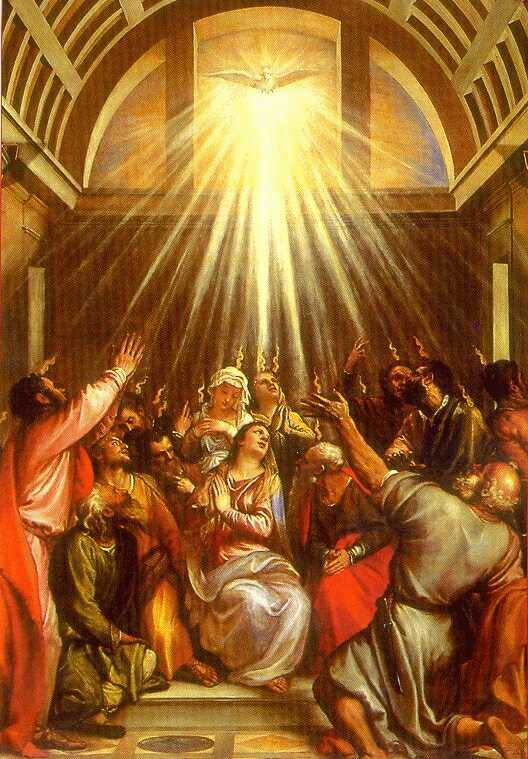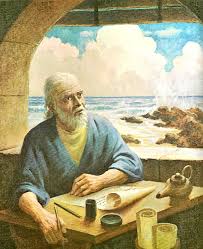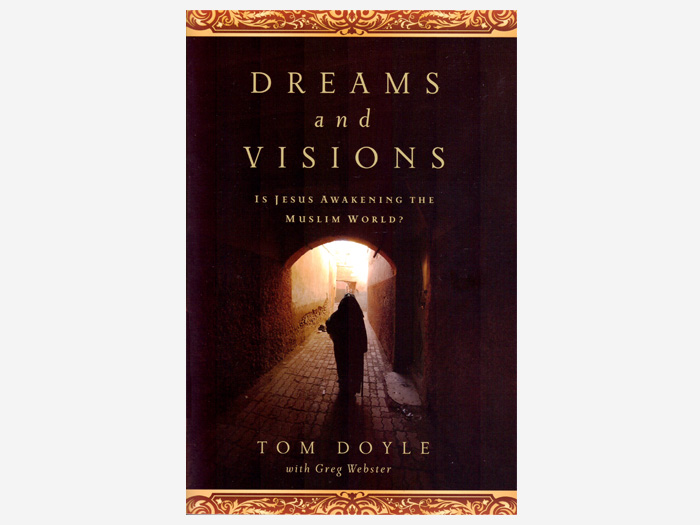 “And it shall be in the last days,” God says, “that I will pour forth My Spirit on all mankind; and your sons and your daughters shall prophecy and your young men shall see visions, and your old men shall dream dreams.” (Acts 2:17)
“And it shall be in the last days,” God says, “that I will pour forth My Spirit on all mankind; and your sons and your daughters shall prophecy and your young men shall see visions, and your old men shall dream dreams.” (Acts 2:17)
On this blog site I have covered women in church history throughout the ages. There are stories of women from the Old Testament, the New Testament, the early centuries, the Reformation, the great missionary age and more. I have not written many stories of women who lived during the Middle Ages. Even for the ones I have written about (such as Hildegard of Bingen, Catherine of Siena, and Birgitta of Sweden), I have only touched on certain aspects of their lives. I emphasized their charitable works and their piety; I left out much about the mystical aspects of their lives including their dreams, visions, and ecstatic experiences.
The subject of dreams, visions, and other ecstatic experiences has been troublesome to me as I suppose it is for many other Christians. This summer I have decided to write the stories of Medieval women saints. Hildegard, Catherine, and Birgitta and many other godly women served Christ in amazing ways. They left their marks on church history. They deserve to have their stories told in spite of what may be considered their controversial experiences.
So, let’s deal with the subject of dreams and visions. They are real experiences. What do we make of them? Where do they come from? Are there still supernatural dreams and visions today?
Dreams, visions, and ecstatic experiences come from three places: God, ourselves, or the devil.
In the Bible we see the stories of many people who had dreams or visions. God gave these experiences to people to teach them something, save them from harm, or to provide a prophecy for them to give to His people. Some examples are:
- Jacob’s Ladder – This dream was very important because God was confirming His promise of the land that He would give to Abraham and his descendants. (Genesis 28:10-22)
- Joseph’s Interpretation of Pharaoh’s Dream – God gave Pharaoh this dream (Genesis 41:28) so that preparations could be made to save lives. Because he interpreted the dream, Joseph became the number two man in Egypt.
- Many prophets such as Daniel had dreams. Daniel’s interpretation of the king’s dream made him the number two man in Babylon, an experience similar to Joseph’s.
- Angels appeared to Zechariah, Mary, Joseph (3 times), the women at the tomb, and Philip in the New Testament.
- Peter had a dream while at Cornelius’ house. He was shown in no uncertain terms that the Gentiles were to be included in the family of God.
- Christ appeared to Saul on his way to Damascus. An angel appeared to Paul while he was in prison.
- Stephen was arrested by the Jewish leaders for teaching about the Way. They did not like what they heard and condemned him to death by stoning. As he was nearing death, God gave Stephen a vision of the “Son of Man” at the right hand of God in heaven. (Acts 7:56).

- John had a vision while on the island of Patmos. While imprisoned there he wrote down the visions that he received from Jesus concerning the things “which must soon take place; and He sent and communicated it by His angel to His bond-servant John” (Revelation 1:1, 9, 10).
The general principles that we can discern about dreams from God in the Scriptures are:
- God gave these dreams and visions at important times.
- God also gave the interpretation of the dreams.
- The dreams often confirmed promises that God had made.
- The dreams were often sent to protect His children.
- The dreams were sent to give instructions. The dreams center on God, Christ or important acts of God. Dreams such as John’s were prophetic.
The dreams in the Bible were supernatural experiences given by God. We take them by faith and learn from them.
The question now is: Did supernatural dreams cease with the end of the Apostolic Age? Does God still speak to people through dreams and visions?
As mentioned above, there are three sources of dreams or visions: God, ourselves, or Satan. We agree that the dreams in the Bible were given by God. What about today?
Many Christians believe that the supernatural experiences, such as healing, tongues, and prophecy ceased at the end of the Apostolic Age. Visions and ecstatic experiences would all fit in this category. So it will not come as a surprise that many would say that the visions experienced by Hildegard, Catherine, and Birgitta were either from themselves or from the devil.
There are many good books on dreams. For our purposes in this writing, let us just say that some dreams are the result of what we have been thinking about or experiencing. In the context of mysticism, we could say that the saints were meditating on Scripture or Bible stories or other spiritual topics so much that they dreamed about them when they slept. This would be a purely natural explanation. Those who say that God no longer gives supernatural dreams would be comfortable with the explanation that dreams come from ourselves.
When it comes to visions, many believe that any supernatural vision comes from Satan. As a child I was told a popular story about Martin Luther. (I don’t know if it was true or not, but it illustrates the point.) Apparently Luther had a vision of Christ and was reported as saying, “Get thee behind me Satan!” In other words, the Reformers believed that the visions of Jesus or Mary that many Roman Catholics were receiving were from Satan. They did not believe that God spoke to people in this way. They believed that we must turn to the Scriptures alone for knowledge of God.
So we are back to the question – what are we to think of the visions and dreams experienced by the women mystics during the Middle Ages?
Before we make a judgment, here are some things to consider:
- Not everyone during the Middle Ages had a Bible to read. For many centuries the Scriptures were inaccessible to most people.
- During the Middle Ages piety was seen more as something you do, not just what you believe. Emphasis was placed on good works as proof of your faith (James 2:24-26).
- Women during the Middle Ages were not allowed to attend seminary or to become teachers of the Scriptures. It was thought that women were too stupid or sinful to understand the Bible. Many women sought spiritual experiences as a fulfillment of their desire to grow closer to God. The church tolerated mysticism during the Medieval Age.
- During the Middle Ages dreams and visions were more a part of the everyday practice of religion than today.
- In fact, there were women such as Hildegard of Bingen who lived such a pious life, full of wisdom and good works, that when they had a dream or vision it was given credibility by the people.
- No matter how strange it may seem to twentieth century western materialistic Christians, do the dreams fit the principles stated above? Do they confirm the Word of God? Do they result in godly characteristics or actions?
Even during the Middle Ages people had differing opinions about dreams and visions. Contemporary attitudes toward Margery Kempe (1373-1438) are a good example. Margery had many followers who believed every word she said. There were also skeptics who felt that she was just a fake. Some went so far as to say that she had a demon. We see that there has always been a question about dreams and people were trying to discern the legitimate ones from the false ones.
If God gives dreams and visions at various times in history, then we would expect to see Him doing that today. In fact, I believe that we do see this.
 In his book, “Dreams and Visions: Is Jesus Awakening the Muslim World?”, Tom Doyle recounts the testimonies of Muslims who were introduced to the Christian faith through a vision or dream about Jesus which he calls “visitations”. I have no doubt that these experiences are real since the Muslim converts risk their lives by converting to Christianity. No one would act on a dream to that extent unless it was real.
In his book, “Dreams and Visions: Is Jesus Awakening the Muslim World?”, Tom Doyle recounts the testimonies of Muslims who were introduced to the Christian faith through a vision or dream about Jesus which he calls “visitations”. I have no doubt that these experiences are real since the Muslim converts risk their lives by converting to Christianity. No one would act on a dream to that extent unless it was real.
Rev. Doyle gives us some guidelines on how to recognize legitimate dreams/visitations from Jesus that I believe can help us as we consider the dreams of the Medieval Mystics.
- Is there anything in the dream that goes against Scripture? Is a true picture of Jesus given in the dream? If not, then the dream is false. We must be careful because Satan can disguise himself as an angel of light (II Corinthians 11:14).
- Is the person consistent about the specifics of the dream even for a long time afterward? Naturally occurring dreams are easily forgotten: details from supernatural dreams stay with a person.
- Is there a purpose to this dream or is it just a stand-alone event? Does the dream move the person to seek to know more about God?
- Does this dream draw the person closer to God? In the case of the Muslims, the dreams result in real repentance and committing their lives to Christ. For the Medieval Mystic, does the dream result in more piety or fruit in her life?
- For the Muslims, the dream brings definition to their lives. It is part of them and cannot be shaken off. It becomes a part of their testimony. For the mystic in the Middle Ages, does the dream become part of her testimony of God’s greatness and glory?
In the coming weeks we will have the opportunity to look at the dreams and visions of the women Christian mystics of the Middle Ages. Let us keep open minds and consider the times in which they lived. Are their dreams consistent with the principles that we drew from the Scriptures? As we look at these women’s lives, let us not just write them off as frauds or fools. Let us see what we can learn from them.

